

The History of H M Schooner PICKLE
The fabulous replica of Nelson’s topsail schooner HM Schooner Pickle that featured in the BBC series Boats that Built Britain has
been bought by MNABC member Mal Nicholson, owner of the magnificent Humber sloop Spider T.
The original PICKLE was a schooner. So any reference to her as HMS PICKLE or any description of her as a ship is historically
completely wrong. In 1805 terms a ship was a three masted, square-rigged vessel, and a naval ‘Ship’ (with a capital S) was under
the command of a Captain RN. The PICKLE was neither.
In 1800 Vice Admiral Lord Hugh Seymour, Commander-in-Chief at Jamaica, wrote
to the Navy Board in London to inform them that he wished to purchase a new
schooner to act as tender to his flagship HMS SANS PAREIL. The Navy Board
wrote back ordering him to do no such thing, but Lord Hugh was son of the Marquis
of Hertford, grandson of the Duke of Conway, son-in-law of the Marquis of
Waldegrave and the Duchess of Gloucester, friend of the Prince of Wales, MP for
Portsmouth and a former Lord Commissioner of the and he was not about to be told
what to do by some bean-counting civil servant. So his next letter to the Navy
Board in December 1800 described their newly purchased tender, the STING, a
‘clever, fast-sailing schooner of about 125 tons, coppered and in every respect
suited for the service’, cost just £2500. She measured 73 ft. overall, 56 ft. 3 in. on
the keel, by 20 ft. 7 in breadth and 9ft 6in depth, giving a measurement of 127 tons.
For naval service she was armed with six carronades, 12 or 18 pounders, and had
a complement of 35 to 40. She was built in 1799, probably at Bermuda, for a
consortium of Jamaica merchants, perhaps (given her name) with the intention of
using her as a privateer.
Lieutenant Thomas Thrush of the flagship SANS PAREIL was given command of
the STING, and her first year of service in the Caribbean was as squadron
despatch vessel, carrying despatches, orders, stores and personnel to the station's
outlying ships and establishments. The Navy Board had ordered that the STING should be renamed PICKLE, but throughout her time
in the West Indies this order was ignored. The reason for the order was probably not to keep the illustrious name PICKLE alive but to
disguise the acquisition of a new schooner from the Royal Navy’s oldest and most bitter enemy, the Treasury.
In September 1801 Lord Hugh Seymour died of yellow fever. Naturally, his family and connections wanted him to be buried at home
in England, so the STING, Lieutenant Thomas Thrush commanding, first formally opened a Pay Book as an independent command in
October 1801, to carry the Admiral’s body home to England.
In May 1802 Lt Thrush was relieved by the PICKLE's new commander, Lt John Richards Lapenotiere. Under Lapenotiere's
command, she was initially employed in the Mediterranean carrying despatches to Sir Richard Bickerton's squadron off Sardinia, with
visits to Naples, Malta, Cartagena and Gibraltar. In 1803 she joined the fleet off Ushant, for the close blockade of the French naval
base at Brest and the Brest Blockade was the PICKLE's station for the next year and a half, with occasional diversions carrying
despatches to the squadrons off Ferrol, Corunna and Rochfort. The PICKLE, as one of Admiral Comwallis' s fleet's smallest vessels,
was usually given the dogsbody jobs and was horribly hard worked. She had been built for speed, and for the Caribbean not for
inshore, all-weather, work in whatever the English Channel could throw at her.
During Lapenotiere' s 41 months in command of the PICKLE she lost or sprung her bowsprit or jibboom seven times, as well as
losing or damaging other spars, including her main boom three times. On three occasions he had to heave some of the schooner's
guns overboard to save the ship. None of her other commanding officers ever managed to suffer damage or loss at anything like that
rate.
The PICKLE was sent to the West Indies over the winter of 1804/05, returning to Plymouth for a long refit in May 1805. Between July
and October she shuttled between Plymouth, Sir Robert Calder's fleet off Finisterre and Lord Nelson's off Cadiz, carrying despatches,
narrowly avoiding capture by Spanish gunboats on one occasion. In early October she was off Cadiz with Henry Blackwood's
Advanced Squadron of frigates when, early on the 19
th
, the Combined Fleet at last came out. During the battle of Trafalgar, two
days later, PICKLE's task was to act as 'safety boat’, rescuing swimmers and doing what good she could where she could. (The
frigates, brigs, schooners and cutters of both opposing fleets did not take an active, shooting, role in a fleet action between line-of-
battle ships.). Most notably she and her boats together with the boats of the other unengaged ships, saved many men and one
woman, Jeanne Caunant, from the sea when the French ship ACHILLE caught fire and blew up. By the time the fighting was over,
the PICKLE had somehow managed to find room for 160 French prisoners, all survivors of the ACHILLE.
On the 26
th
Lt Lapenotiere was summoned on board HMS EURYALUS, Admiral Collingwood's temporary flagship, to be given the
prize job of taking news of the victory - and of Nelson's death - home to the Admiralty. For Lapenotiere this was the career defining
moment. He was 35 years old, and although he had a command, it was only a schooner - for years he had been the fleet's SLJO
('silly' little jobs officer) and without a lucky break he could expect no further promotion, or much future employment. Now, whoever
carried this news home was sure of promotion to Commander and a sloop to command; he could also look forward to a sizeable cash
reward - £500 was the going rate for bringing news of a victory in a fleet action. He would also be a little famous at least for a while
(he's managed 200 years so far). Normally, this sort of plum would have gone to a frigate Captain, in this instance probably
Blackwood of the EURYALUS, but Collingwood needed every ship of force by him in case of another attempt by the survivors of the
Combined Fleet to break out.
At noon on the 26
th
the PICKLE shaped her course for England. On the 29
th
, with Cape St Vincent in sight over the starboard
quarter, all Lapenotiere's dreams turned to ashes, as HM Sloop NAUTILUS joined company. Her captain, Commander John Sykes,
came on board, learned the news and, rather officiously (but certainly correctly, being the senior officer), offered to share the burden
of carrying it. NAUTILUS then set a course for Plymouth and, being the bigger vessel, square rigged and a better sea-boat in that
following wind and swell than the PICKLE, within a couple of days had, caught her, overhauled her, and passed out of sight over the
horizon. It was all going horribly wrong for the PICKLE and Lt Lapenotiere, and they must have thought the race was already lost. But
never say die.
On the 2
nd
of November, the NAUTILUS was very nearly intercepted by a French squadron out of Lorient though they made no effort
to chase. The PICKLE, from being far behind, was now over the horizon and far ahead. At 10am on the 4
th
of November,
Lapenotiere went ashore at Fish Strand Quay, Falmouth, announced the news to the few spectators and hired a post chaise to take
him the 266 miles to London. This was a huge gamble, and a huge investment - the cost to hire a four horse shay from Falmouth to
London was half a Lieutenant’s annual pay and he had no guarantee the Admiralty's travel budget would reimburse him. But the
normal coach service would have taken a week or so, Collingwood's despatches contained the most important news in a generation
and he still didn't know whether he was running second to Sykes of the NAUTILUS.
In fact the NAUTILUS was half a day behind, and heading for Plymouth, forty miles further East. Sykes landed at Plymouth late in the
evening of the 4
th
, and then he too took a post chaise up to London, but Lapenotiere was still ahead. Lapenotiere eventually reached
the Admiralty, 19 changes of horses and 37 hours after leaving Falmouth, not long before midnight on 6
th
November. The Secretary of
the Admiralty, William Marsden, had been working late (as usual), and met Lapenotiere in the Boardroom. “Sir, we have gained a
great victory, but we have lost Lord Nelson”. The First Lord, Lord Barham, and his domestic staff had turned in, and it took Marsden
some time to find him. When he shook him awake, Barham's first words were “What news, Mr. M?”. Then the two men set-to to
compose letters to spread the news to the Cabinet, the King and the Lord Mayor of London. They also had to prepare Collingwood’s
despatches for publication, first in the London Gazette, the official Government journal, then for the public presses. While this was
going on, Sykes's post chaise pulled in to the Yard of the Admiralty - just about an hour too late.
In the morning Lapenotiere was taken to Windsor where he explained the progress of the battle to King George using the breakfast
cutlery to show the movements of the opposing fleets - Nelson's flagship HMS VICTORY was represented by a silver muffmiere
(whatever that is), which the King, in an act of charming eccentricity, insisted on presenting to Lapenotiere.
In addition to this, and perhaps more significantly to him, Lapenotiere was promoted to Commander, received a sword worth 100
guineas from the Patriotic Fund, plus his share of the prize money from the battle and, eventually, but only after three petitioning
letters, the £500 customary for the bearer of news of a victory. He also had his expenses chit honoured. He was eventually
promoted to Post Captain in 1811. John Lapenotiere continued his service on the Baltic blockade. After suffering a severe injury from
an accidental explosion, he took up a desk job in Plymouth. He died in 1834.
The PICKLE, under her new commanding officer, Lt Daniel Callaway, rejoined Collingwood in December, again as despatch vessel.
In the spring of 1806 she returned to patrol and examination duties off Devon and Cornwall, with occasional missions with
despatches, to Barbados in August/ September 1806, but more often to the fleet off Ushant.
On 26
th
July 1808 PICKLE was carrying dispatches from England for Admiral Lord Collingwood at Cadiz when Cannadey sighted
Cape Santa Maria in the evening and set his course on that basis. At midnight the lookouts sighted broken water. The helmsman
immediately tried to turn her but it was too late and she grounded. PICKLE started filling rapidly with water, which caused her to tip to
port. The crew took to her boats and landed on the Spanish shore. In the morning, Cannadey returned to the wreck where he found
her unsalvageable as her bottom was completely stove in. He determined that she had wrecked on the Chipiona shoal.
The journey of HMS Pickle and the bearing of the news from Trafalgar is commemorated by Warrant Officers of the Royal Navy on
November 5th, known as Pickle Night, in a similar celebration to that of Trafalgar Night celebrated by Commissioned Officers.
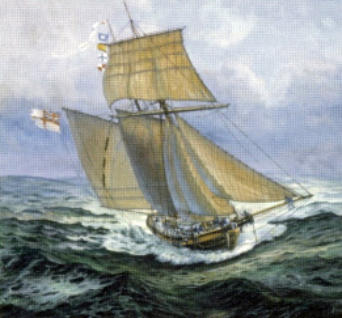
Current Situation
In 1996 a replica of the schooner Pickle was rebuilt in St Petersburg, Russia, using
the Russian ship Alevtina & Tuy as a basis, and took part in bicentenary anniversary
celebrations of the Battle of Trafalgar in 2005. She was subsequently used in the
filming of the BBC Four series Boats that Built Britain.
In 2014 the replica schooner was bought by MNABC member Mal Nicholson and is
currently moored in Ocean Village in Gibraltar undergoing repairs.
Previous owner Robin James, whose family had owned Pickle for the past nine years,
said “the decision to sell Pickle has been made far easier by finding Mal, who I trust to
continue to care for her and get her sailing again, while continuing to share her with
everybody from her past, present and future.”
For information see the Pickle facebook page, where he will post information on future
plans for the vessel, and will be re-developing the website www.schoonerpickle.com.
(note that currently the website still pertains to the old role of Pickle which no longer
applies)
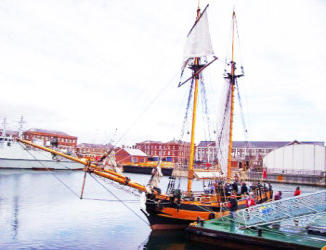

Fredrick Warren designed the Zenitha and Spider T, yard numbers 213 and 216 respectively. They were very
similar in construction except the Spider T was one foot deeper in the hull. Fredrick Warren was labelled a
genius when it came to ship design and the Zenitha and Spider T were testaments to his skill, the last Sloops
he designed before his untimely death. These Sloops were to be known as Super Sloops, heavily built and
designed to go seaward with a deep hull and large cargo capacity and a fine run aft to give them speed and
handling qualities, the bluff bow cleverly picks her head up even when heeled over stopping her from diving,
unlike a chisel bow form, a swansong to the end of the sail powered cargo era, encompassing over a
thousand years of development and know how, with every new trick, in fact everything Frederick Warren knew
about hull design went into these two ships.
The origins of these vessels go back to the Viking long ships which were used and repaired in the Humber
region and were adopted and developed, they were square rigged, bluff bowed and seaworthy. As one
historian said “cut the prow off a Viking Long ship and look at a wooden Humber Keel’s bluff bows, they are
almost identical”.
Peter Warrens father and grandfather built the Spider T at their Warrens Yard, New Holland on the banks of
the river Humber. She has many unusual features in her design being very heavily built with inch plates below
and 3/8 inch above. Such a deep hull form make her much heavier than other similar vessels. The Super
Sloop Spider T, at 70.4 gross cargo tons, was built to carry bricks seaward and was financed by Fosters
Brickyard of Barrow Haven, who also had the Zenitha built to a similar specification. Spider T was launched
in February 1926 and delivered in March to Captain Tomlinson of 26 South Parade, Thorne before fame and
fortune took him to Hull. The name Spider was his nephew’s nickname and the suffix T stood for Tomlinson.
Spider T was the pride of the Tomlinson fleet. When the Spider T was only weeks old and brand new she was
entered into the Humber Regatta and came second. In subsequent years, up until the final year of 1929,
Spider T and Zenitha were strong front runners often leading by considerable distances. Proof if any were needed of Frederick
Warren’s Super Sloops and their ability to take on the best of the rest through his genius and technical excellence.
When Captain Tomlinson died in 1970 his fleet was auctioned at Goole
and his widow bought the Spider T back again, eventually becoming a
sunken derelict at Castleford before being raised by Rotherham Police as
a community project, earning Sergeant Keith Bown the British Empire
Medal. His work with the Spider T will feature in the second half of his
autobiography he assures us. An audio CD of a 93year old sailor who
saw the Spider T as a young lad whilst sat on Admiral Steps at Kingston
Upon Hull tells the story of what he saw. His uncle Joe was skipper and
his father and uncle Mitzpah were crew for the Spider T. In the Humber
Regatta, when they were leading by a country mile and what looked like
an absolute certainty of an overall win, she was really flying when disaster
struck. His father asked Joe to “reef the main and get some tops’le
down”, and Joe replied “what’s up are you yellow?”. "No”, replied Joe “I
will turn her over if you want”. By this time she was heeled well over, the clew ripped out of the main and the race was lost. Nothing
would ever make him forget the speed and the amount of heel, he said “she was laid in the water not laid on it”. He went on to
become a skipper and to work the Spider T and many other vessels including Sobriety and Daybreak in his long career.
Every effort has been made to make the Spider T authentic to her original methods of construction e.g. hand forged steel crab roller
frames with hot swaged mountings so as not to weaken the structure, just as in the originals. Also the huge red sails are hand made
to original specifications with clipper canvas, the new rudder to Warren’s pattern must weigh ¾ ton and the stern rail or “hoss rail” is
made out of pitched pine - a huge timber 20 foot long, 10” thick and 20” wide to get the curve. Many more engineering challenges
have been undertaken to make her not just look correct, strong and heavy duty but,
most importantly, useable even in the most difficult conditions as her recent voyage
back from Rotterdam direct over the North Sea was to prove. 12 hours in storm force
nine conditions sails up and spilling the wind, from 10pm to 10 am between Smith’s
Knoll and Lowestoft in huge seas, proving herself stable tough and very capable, just
what Frederick Warren wanted, eventually putting her in to Yarmouth as a safe haven.
She is indeed a testament to the Warren family and their shipyard. Peter Warren, last
of the dynasty, who worked for Harland and Woolf, Vospers and other shipyards, has
an active interest in the Spider T and with his two sons and wife Marjorie are regular
visitors to the vessel. In Peters own words “I would like to acquaint myself again with
Spider T. It will be over fifty years since I last saw her”. The Spider T has, in around
three years, been to West Mersea, Harwich, Lowestoft, Yarmouth, Hull, Grimsby,
Bridlington, Whitby, Blythe, Eyemouth, Anstruther, Arbroath and Rotterdam. Some
ports were visited many times, Spider T covering around 5,000 nautical miles in this
period with some calm seas and some very rough conditions. Overall the sheer
enjoyment and adventure make all the hard work and sacrifice worthwhile for the crew and skipper.
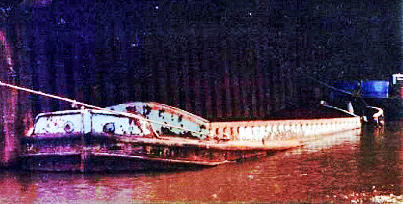
Derelict
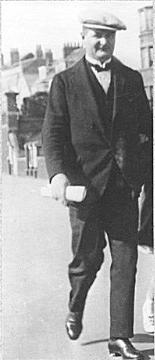
Frederick Warren
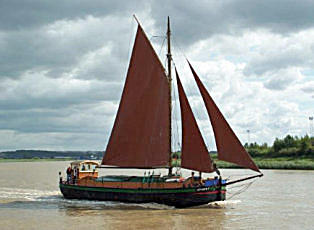
Spider T
Page 2 of 6

“Bustler Class Rescue Tugs: in War & Peace”
Is a new title from Whittles Publishing by R.O. Neish
revealing the part played by the eight Bustler Class
Rescue Tugs built at the Henry Robb Shipyard during
the Second World War shedding more light on the
almost forgotten part played by this country’s (UK)
mariners.
This is the story of the small force of much-needed
rescue tugs that were built during the dark forbidding
days of the Second World War, when Great Britain had
only the ships and men to bring in the raw materials that
were required to fight against the might of Nazi Germany
and its Allies.
This compelling story shines a spotlight on the small, but very significant work done over many
years by His and Her Majesty’s Rescue Tugs in defence of the realm, and which benefited
seafarers all over the world.
The author’s very detailed account of the contribution made by HMRT in general, and the Bustler
Class in particular has brought to life the immense impact that these rescue tugs have had over
many years and especially during the Second World War. Many of these ships also served with
the Royal Fleet Auxiliary (RFA) and this story recognizes the part played by these heroic rescue tugs in accounts of many convoys
that crossed the seas and were attacked by hostile forces.
This fine volume will help to raise the profile of these magnificent small and immensely powerful vessels, and of course their
highly-skilled crews without whom these heroic achievements would not have been possible.
“Bustler Class Rescue Tugs” (ISBN 978-1-84995-504-1) is issued as a paperback. The book counts 143 pages and normally
retails at £17.99. However, MNA members can obtain a 20% discount by ordering directly from the publisher, Whittles Publishing,
Dunbeath Mill, Dunbeath, Cairness IKW6 6EG, Scotland (UK), e-mail: info@whittlespublishing.com , www.whittlespublishing.com .
Eight diesel rescue tugs were built by Henry Robb's Yard during WWII:
Bustler, Samsonia, Growler, Hesperia, Mediator, Reward, Turmoil and Warden.
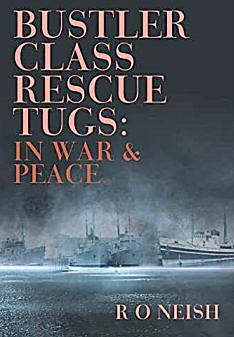
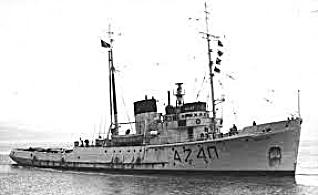
Bustler Class Rescue Tugs
Merchant Navy Association Boat Club
(Affiliated to the Merchant Navy Association National Charity)
FEATURED ARTICLES

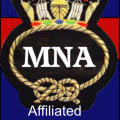

Page 2 of 6
